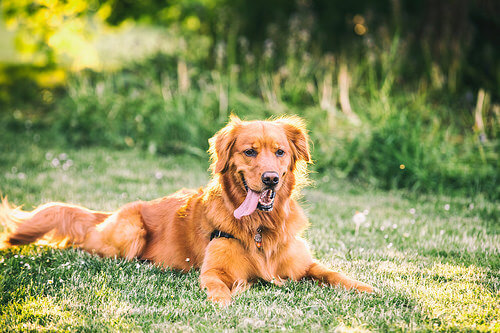5 Common Calming Signals in Your Dog

Dogs are constantly communicating with other dogs and people. To communicate with us, our dogs mainly use body language. Sometimes it’s obvious, but other times things escape us. Find out these 5 common calming signals in your dog that we often overlook.
What are calming signals
Many of the things our dog does throughout the day are calming signals. Dogs are diplomatic and peaceful animals, and much of their body language is oriented to transmit that.
Calming signals in dog accomplish these three things:
- Communicate that they have good intentions.
- Calm down whoever they’re with, because they may not have good intentions or are making them nervous.
- Calming themselves down because they’re nervous or stressed.
The signals are the same for all three cases. Depending on the situation we’re in, both ur as well as the dog, we’ll figure out why he’s acting the way he is.

Knowing these signals will allow us to better understand our pet. Only then can we see the world as she sees it and start to communicate more effectively.
1. Licking its nose
A dog licks its nose repeatedly throughout the day, yet we often overlook. When a dog licks its nose it works very well as a signal to communicate with others dogs because it is only a calming signal. In addition, it’s very easy to see it when a dog licks its nose.
It’s common for a dog to relax when he goes near a bowl of food. Nevertheless, doing so because it’s appetizing is a very human act: dogs normally do so to calm down because they are so excited to see food, or to ask us to approach more slowly because we’ve made them nervous.
2. Shaking off
Dogs shake off when they’re wet, but they also often do so when they’re dry. This means it’s a calming signal; essentially, they use it to calm themselves down after going through something very stressful.
Does your dog ever shake off for no reason in the park? Think about what happened just seconds beforehand in order to understand his stress: he was probably barking at another dog, a child with a ball was too close or a bus recently passed.
3. Sniffing
Sniffing the ground is another calming signal in dogs that we usually fail to notice. Dogs have a very powerful sense of smell and it’s necessary for them to sniff. Nevertheless, there are times that they stop to sniff a spot that shouldn’t have any smell: this is a calming signal.
For example, we might call our dog in the park and, instead of coming, he starts sniffing a piece of dirt of no interest. He’s not smelling it because he likes it, but rather because we seem angry or nervous, and he’s asking for us to relax. It’s his way of saying that he doesn’t want any problems and he just needs a moment to come back.
4. Turning its head away
When a dog turns his head away it’s a calming signal that is very frequent, but we usually don’t take note of it. It’s a very obvious signal that dogs interpret perfectly, but that humans struggle to understand.
When a dog turns her head away it’s because we’re intimidating her or making her nervous. Normally, it’s because we approach them too quickly, or because we’re really close to their face. So, it’s a very quick and comfortable way of showing us that we’re too close to their face.
There are very few dogs that are facing forward in the pictures we take of them. The scene goes like this: they are looking at us and being really cute, then we take out the phone and they immediately turn away. And then there’s no way to make them look at us again! The dog is making this calming signal very clearly: the cell phone is making him nervous.
5. Yawning
This is a calming signal that your dog habitually does that’s one of the hardest to identify, as dogs also yawn when they’re sleepy or when they’re very relaxed. You’ll need to gather from the context if he’s doing so because he’s stressed and wants to relax, because there’s someone that is making him nervous or if he’s just woken up from a nap.
There are moments in which it’s confusing: while playing in the park with another dog he stretches and yawns. It’s not time for a nap; he’s telling the other dog that he’s relaxed. But there are other situations that are trickier, such as when he gets up from a nap and leaves the room to yawn. Is he yawning to tell us he doesn’t want to make a fuss or because he’s sleepy?

Let’s respect our dogs’ calming signals
A dog with a good repertoire of calming signals is so sociable that he’ll be able to communicate with his peers effectively. In fact, he’ll have many dog friends and will be able to avoid getting into fights.
It’s important that we respect the dog’s calming signals, not just ours. He’ll notice that we’re listening to what he’s trying to say and he’ll behave better. Not only that but learning to read what our dog is telling us will help us understand him better. Ultimately, better communication with our dog leads to a better relationship and will make living together happier.
This text is provided for informational purposes only and does not replace consultation with a professional. If in doubt, consult your specialist.